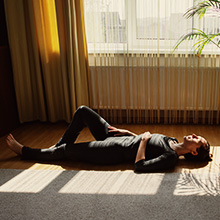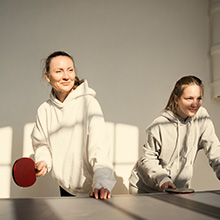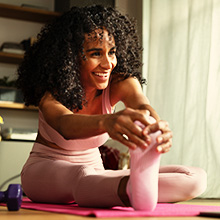The 2021 back-to-school season will look different this year - again. And that’s thanks to COVID-19 and our “new normal”.
With vaccines being rolled out, most Canadian schools are opening in September. But there are slight differences from province to province and school board to school board.
According to the Ministry of Education in Ontario, schools will have the following tools and supports for kids:
- Signs to help kids self-screen for symptoms, reminders to self distance, and wash their hands
- Hand sanitizer throughout schools
- Changes to how students enter and exit the school
- Changes to how students use playgrounds
There will also be an increase in new nurses in public health units. They will help to reinforce preventive measures in schools.
You may be thinking about how you can help prepare your kids for going back to school. Here are some tips to help get you started.
1. Talk to your child about how germs spread
By now, kids have been living with COVID-19 for a long time. They may still feel confused or scared by what they are hearing on the news. If you haven’t yet done so, describe the virus in simple terms. For example, you could say, “COVID-19 is germs that make people sick. And, they can spread from one person to the next.”
If someone they know gets sick, separate the illness from the person, suggests Robbin McManne, a parent coach in British Columbia.
“This is a great opportunity to teach your kids kindness and compassion. Emphasize it’s the virus that is the problem,” McManne says. “And, although the people who have it can make us sick, they are victims, not villains.”
2. Practice social distancing for school
“New normal” behaviours will vary in September to comply with provincial and regional measures. “That’s why parents need to find out as much as they can about school protocol,” says McManne.
“Big changes might feel scary to your kids,” she says. “So prepare them with the facts. Empower them by telling them their role in helping keep themselves, their classmates and their teachers safe. They can do this by following the rules and washing their hands.”
She recommends drawing a picture of what a socially-distanced classroom might look like. You can also role-play the school environment, complete with masks, to help them prepare.
3. Teach kids about proper hygiene
Kids (and adults!) are masters of the quick hand rinse, yet that’s not enough to kill germs.
Work with them to practice scrubbing as they wash their hands. Make sure they rub their palms together and interlace their fingers, as recommended by the World Health Organization (WHO). Use a tune like the “happy birthday” or alphabet song to demonstrate the length of time they should wash their hands.
Then talk to them about how to avoid touching surfaces like door handles and handrails. And remind them to wash up if they do.
You can even make it easier for them to stay healthy by:
- providing personal school supplies and
- packing utensils to use with their lunch so they don’t have to eat with their hands
4. Help your child properly wear a mask – if it’s still required where you live
If your child’s classroom requires a mask, here are some tips:
Teach your child that they need to wear a mask until a teacher says they can remove it. For example, some kids might need to wear one on the school bus. But they may not have to wear one when outside or physically-distanced in their classroom. Stress that it’s a safety item, just like a car seat or seat belt.
Then show them how to wear and care for the mask, as instructed by the WHO. That means washing hands before putting it on.
Provide a zip top bag or other holder to keep the mask sanitary when your child isn’t wearing it. You’ll also want to caution them to wash their hands before and after removing it. Some schools will be handing out disposable masks. Remind your child to follow the instructions they will receive in school.
Wash the mask daily or swap it out for another one, and remind them never to share their mask. It turns out many children have gotten used to their masks and don’t mind wearing them. Try taking your child shopping with you to pick out masks. Picking them out themselves will help your child to feel excited about wearing one in September. It’s also another way to celebrate their individuality.
5. Ease your child’s (and your own) fears about going back to school during COVID-19
Reassure them that school might still feel a little different this year. But these routines are all part of back-to-school safety tips. Remind them that these safety measures will help keep them, their classmates, teachers and community healthy.
McManne also suggests checking in with your kids to see how they’re feeling. “Let them know you’re open to talking about their worries and questions anytime,” she adds.
Plus, be sure to take a minute to acknowledge your own fears. Remember that kids are resilient and most will be fine. But they can also pick up on a parent’s anxiety or fear.
“Your kids will look to you to give them answers. So it’s important you manage your own emotions,” McManne says. “Take a few deep breaths, center yourself and lean into the conversation.”
The more you talk to your kids about safety as they head back to school, the more comfortable they’ll feel.
Another positive: COVID-19 vaccines for children and teens are on the rise. On May 5, 2021, Health Canada approved the Pfizer vaccine for children ages 12 and up. The other three vaccines approved in Canada – Moderna, AstraZeneca-Oxford and Johnson & Johnson – are only approved for people aged 18 and up.
Read more:




